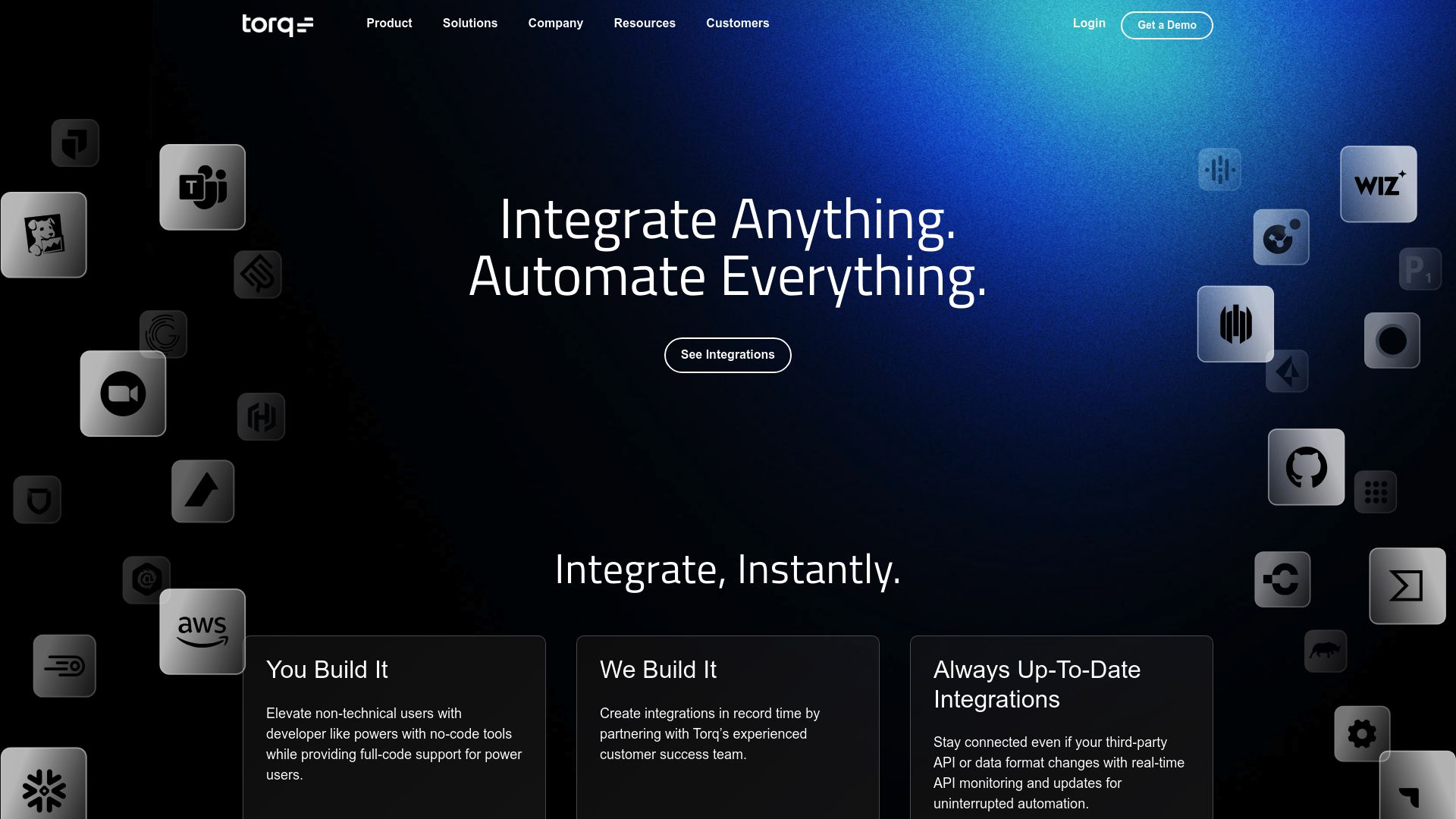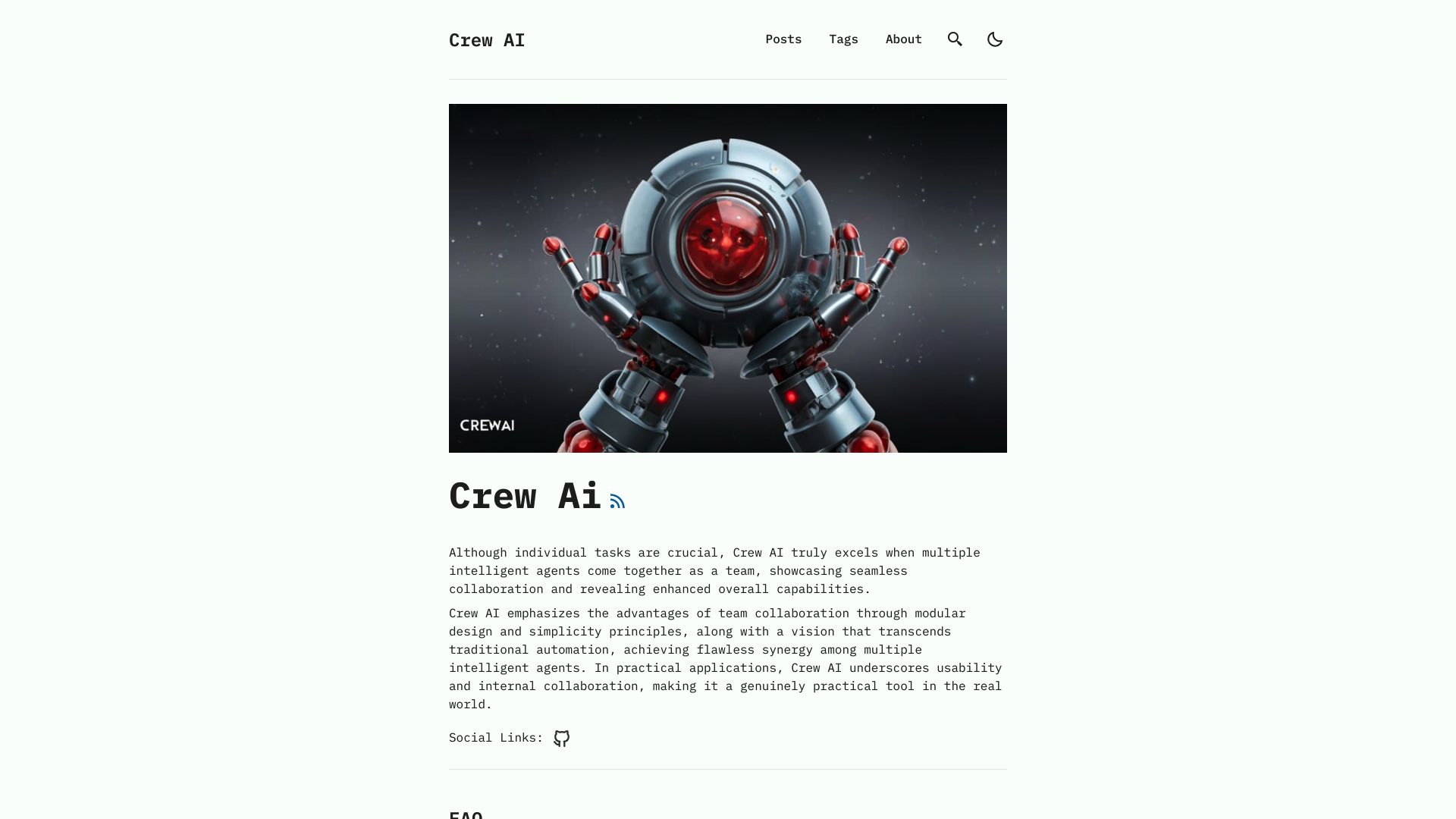Torq Hyperautomation vs. CrewAI: Comparing AI Automation Platforms
AI automation platforms revolutionize how organizations tackle complex tasks, enhance security, and boost productivity. This comparison dives into Torq Hyperautomation vs. CrewAI, and SmythOS, exploring their unique approaches to AI-driven solutions. We examine each platform’s core strengths, from Torq’s security-focused workflows to CrewAI’s collaborative AI agents, and SmythOS’s comprehensive feature set. Whether you’re a developer seeking powerful APIs, a business leader prioritizing scalability, or an AI enthusiast exploring cutting-edge tools, this analysis provides insights to guide your decision-making process. Discover how these platforms address critical needs in AI automation, security, and workflow orchestration, and learn which solution best aligns with your organization’s goals and technical requirements.
Torq Hyperautomation Overview
Torq Hyperautomation delivers a powerful security-focused hyperautomation platform for enterprises. The software empowers security teams to create, deploy, and manage complex workflows that automate critical security operations.


Torq’s platform excels in orchestrating security processes across an organization’s entire technology stack. Its visual workflow designer allows users to build sophisticated automation without coding, making it accessible to both technical and non-technical team members. The software integrates seamlessly with a wide range of security tools and cloud services, enabling rapid response to security incidents and streamlined day-to-day operations.
Torq’s platform excels in orchestrating security processes across an organization’s entire technology stack. Its visual workflow designer allows users to build sophisticated automation without coding…
Key features of Torq Hyperautomation include customizable workflows, flexible triggers, modular action steps, and robust case management capabilities. The platform’s workspace functionality facilitates collaboration and resource sharing among team members, while role-based access control ensures proper security governance.
While Torq Hyperautomation offers significant advantages in security automation, it lacks some advanced AI capabilities found in other platforms. The software doesn’t include AI agents or autonomous decision-making features, focusing instead on rule-based automation and orchestration. This limitation may impact its utility for organizations seeking more advanced AI-driven security solutions.
Torq Hyperautomation positions itself as a scalable, enterprise-grade solution for security teams looking to enhance their operational efficiency. Its strengths lie in its ease of use, extensive integrations, and ability to handle complex security workflows. However, organizations requiring deep AI capabilities or looking for a more general-purpose automation platform may need to consider alternative solutions.
CrewAI Overview
CrewAI empowers developers to orchestrate collaborative AI agent teams for complex task solving. This open-source framework enables the creation of specialized agents with defined roles, goals, and skills to work together in structured workflows.


The Python library allows developers to configure AI agents, assign tasks, and manage collaboration through customizable processes. CrewAI’s role-based agent design shapes behavior through clear roles, goals, and backstories. The platform supports flexible task delegation, enabling agents to autonomously hand off or collaborate on assignments.
CrewAI integrates human-in-the-loop capabilities, allowing agents to incorporate human input when needed. Its process-driven approach ensures coordinated teamwork between agents through structured workflows.
CrewAI integrates human-in-the-loop capabilities, allowing agents to incorporate human input when needed. Its process-driven approach ensures coordinated teamwork between agents through structured workflows. While powerful, CrewAI requires programming expertise, potentially limiting accessibility for non-technical users.
The framework’s modular, open-source architecture encourages community contributions, expanding its capabilities over time. CrewAI aims to simplify the development of sophisticated multi-agent AI systems, allowing developers to focus on defining agents and workflows tailored to specific needs. As the platform evolves, it has the potential to become a robust foundation for collaborative AI development across various industries.
Feature Comparison
Torq Hyperautomation and CrewAI offer distinct approaches to AI-driven automation, with key differences in their core components and security features. Torq focuses on security-centric hyperautomation, while CrewAI emphasizes collaborative AI agent teams.
Torq Hyperautomation excels in security operations, providing a visual workflow designer for creating sophisticated automation without coding. It offers extensive integrations with security tools and cloud services, enabling rapid incident response. However, Torq lacks advanced AI capabilities like autonomous agents or AI-driven decision-making, focusing instead on rule-based automation.
CrewAI, as an open-source framework, allows developers to build specialized AI agents with defined roles and goals. It supports flexible task delegation and human-in-the-loop integration, ideal for complex problem-solving. Unlike Torq, CrewAI enables multi-agent collaboration, but requires programming expertise, potentially limiting accessibility for non-technical users.
In terms of security, Torq Hyperautomation likely offers more robust features given its focus on security operations, though specific details are not provided in the given information. CrewAI, being open-source, may offer less out-of-the-box security features but allows for customization to meet specific security needs.
We at SmythOS offer a comprehensive solution that combines the strengths of both platforms. Our AI agents feature advanced autonomous capabilities and multi-agent collaboration, while also providing robust security measures and a user-friendly visual builder. This makes SmythOS an ideal choice for organizations seeking a balance between sophisticated AI functionality and ease of use.
Feature Comparison Table
| Torq Hyperautomation | CrewAI | SmythOS | |
|---|---|---|---|
| CORE FEATURES | |||
| Hosted Agents (Dev, Production) | ✅ | ❌ | ✅ |
| Environments (Dev, Production) | ✅ | ❌ | ✅ |
| Visual Builder | ✅ | ❌ | ✅ |
| No-Code Options | ✅ | ❌ | ✅ |
| Explainability & Transparency | ❌ | ❌ | ✅ |
| Debug Tools | ✅ | ❌ | ✅ |
| Multimodal | ✅ | ❌ | ✅ |
| Problem-Solving Capabilities | ❌ | ✅ | ✅ |
| Human-AI Interaction | ❌ | ✅ | ✅ |
| Audit Logs for Analytics | ✅ | ❌ | ✅ |
| SECURITY | |||
| Constrained Alignment | ✅ | ❌ | ✅ |
| Data Encryption | ✅ | ❌ | ✅ |
| OAuth | ✅ | ❌ | ✅ |
| IP Control | ✅ | ❌ | ✅ |
| COMPONENTS | |||
| Foundation AIs | ✅ | ❌ | ✅ |
| Huggingface AIs | ❌ | ❌ | ✅ |
| Zapier APIs | ❌ | ❌ | ✅ |
| All other APIs, RPA | ❌ | ❌ | ✅ |
| Classifiers | ✅ | ❌ | ✅ |
| Logic | ❌ | ❌ | ✅ |
| Data Lakes | ✅ | ❌ | ✅ |
| DEPLOYMENT OPTIONS (EMBODIMENTS) | |||
| Deploy as API | ❌ | ❌ | ✅ |
| Deploy as Webhook | ✅ | ❌ | ✅ |
| Staging Domains | ✅ | ❌ | ✅ |
| Production Domains | ❌ | ❌ | ✅ |
| API Authentication (OAuth + Key) | ❌ | ❌ | ✅ |
| Deploy as Site Chat | ✅ | ❌ | ✅ |
| Deploy as Scheduled Agent | ❌ | ❌ | ✅ |
| Deploy as GPT | ✅ | ❌ | ✅ |
| Scalability | ❌ | ✅ | ✅ |
| DATA LAKE SUPPORT | |||
| Hosted Vector Database | ✅ | ❌ | ✅ |
| Sitemap Crawler | ❌ | ❌ | ✅ |
| YouTube Transcript Crawler | ❌ | ❌ | ✅ |
| URL Crawler | ❌ | ❌ | ✅ |
| PDF Support | ❌ | ❌ | ✅ |
| Word File Support | ✅ | ❌ | ✅ |
| TXT File Support | ✅ | ❌ | ✅ |
Best Alternative to Torq Hyperautomation and CrewAI
SmythOS emerges as the superior alternative to Torq Hyperautomation and CrewAI, offering a comprehensive AI agent development platform that combines advanced capabilities with user-friendly features. We designed SmythOS to address the limitations of both competitors while providing a versatile solution for businesses of all sizes.
Unlike Torq’s narrow focus on security operations and CrewAI’s developer-centric approach, SmythOS delivers a well-rounded platform accessible to both technical and non-technical users. Our visual drag-and-drop interface empowers users to create sophisticated AI workflows without extensive coding knowledge, democratizing AI development across organizations.
SmythOS delivers a well-rounded platform accessible to both technical and non-technical users. Our visual drag-and-drop interface empowers users to create sophisticated AI workflows without extensive coding knowledge…
SmythOS excels in its extensive integration ecosystem, supporting a wide array of APIs, AI models, and tools. This flexibility allows seamless incorporation into existing business processes, surpassing the limited integrations offered by Torq and CrewAI. Our platform also provides pre-built templates and components, significantly reducing setup time and allowing users to focus on innovation rather than technical implementation.
We pride ourselves on SmythOS’s superior multi-agent collaboration capabilities, enabling teams of AI agents to work together on complex tasks. This feature sets us apart from Torq’s rule-based automation and enhances the collaborative aspects introduced by CrewAI. Additionally, SmythOS offers versatile deployment options, including API endpoints, chatbots, and scheduled agents, providing unmatched flexibility in how AI solutions are integrated and utilized within an organization.
By choosing SmythOS, businesses gain access to a scalable, secure, and user-friendly platform that combines the best aspects of AI agent development with ease of use. Our commitment to continuous innovation ensures that SmythOS will remain at the forefront of AI technology, providing a future-proof solution for organizations looking to leverage the full potential of AI agents in their operations.
Conclusion
Torq Hyperautomation and CrewAI offer unique approaches to AI-driven automation, each with distinct strengths. Torq excels in security-focused hyperautomation, providing a visual workflow designer and extensive integrations for rapid incident response. CrewAI, as an open-source framework, enables developers to create collaborative AI agent teams for complex problem-solving.
While both platforms offer valuable features, they may fall short for organizations seeking a comprehensive solution that combines advanced AI capabilities with user-friendly design and robust security measures. This is where SmythOS stands out, offering a powerful alternative that addresses these limitations.
SmythOS combines the strengths of both platforms, featuring advanced autonomous capabilities, multi-agent collaboration, and a user-friendly visual builder. Our platform supports a wide range of integrations, enabling seamless connection with existing tools and services. We prioritize security and scalability, making SmythOS suitable for enterprises of all sizes.
For those looking to harness the full potential of AI automation, we invite you to explore SmythOS’s capabilities. Our platform offers over 300,000 integrations, allowing you to create sophisticated AI workflows tailored to your specific needs. Get started with SmythOS today and experience the future of AI-powered automation.
Last updated:
Disclaimer: The information presented in this article is for general informational purposes only and is provided as is. While we strive to keep the content up-to-date and accurate, we make no representations or warranties of any kind, express or implied, about the completeness, accuracy, reliability, suitability, or availability of the information contained in this article.
Any reliance you place on such information is strictly at your own risk. We reserve the right to make additions, deletions, or modifications to the contents of this article at any time without prior notice.
In no event will we be liable for any loss or damage including without limitation, indirect or consequential loss or damage, or any loss or damage whatsoever arising from loss of data, profits, or any other loss not specified herein arising out of, or in connection with, the use of this article.
Despite our best efforts, this article may contain oversights, errors, or omissions. If you notice any inaccuracies or have concerns about the content, please report them through our content feedback form. Your input helps us maintain the quality and reliability of our information.
